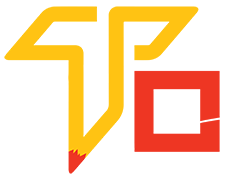Who this website development course is for?
This website development course is designed for beginners and aspiring web developers seeking to acquire fundamental to intermediate skills in building and maintaining websites.
Why take this website development course?
Taking this website development course offers a comprehensive learning experience, equipping you with essential skills in coding, design, and site management, empowering you to create and maintain functional and engaging websites for personal, professional, or entrepreneurial purposes.
What you will learn in website development?
In a website development course, you will typically learn:
- HTML and CSS: How to structure web content using HTML and style it using CSS for layout, design, and responsiveness.
- JavaScript: The fundamentals of JavaScript programming to add interactivity, dynamic behavior, and client-side functionality to your websites.
- Responsive Design: Techniques for creating websites that adapt and look great on various devices and screen sizes.
- Web Design Principles: Basic design concepts, typography, color theory, and user experience (UX) principles to create visually appealing and user-friendly websites.
- Front-End Frameworks: Introduction to popular front-end frameworks like Bootstrap or Foundation for streamlined and efficient website development.
- Version Control: Using tools like Git to manage and track changes to your codebase, enabling collaboration and code management.
- Web Hosting and Deployment: How to host your website on a server and make it accessible to the public on the internet.
- Basic Back-End Concepts: An introduction to server-side technologies, databases, and back-end programming languages like Node.js or PHP.
- API Integration: Connecting your website to external services and APIs to enhance functionality and data retrieval.
- Security Best Practices: Basics of web security, including handling user data, protecting against common vulnerabilities, and securing your website.
- Performance Optimization: Techniques to improve website loading speed and overall performance for better user experience.
- Content Management Systems (CMS): Introduction to using platforms like WordPress, Joomla, or Drupal for website creation and management.
- E-commerce Integration: Basics of setting up an online store, integrating payment gateways, and managing e-commerce functionalities.
- SEO Fundamentals: Understanding search engine optimization principles to improve your website’s visibility on search engines.
- Debugging and Troubleshooting: Strategies for identifying and resolving common coding and technical issues in website development.
SALARY & PACKAGES
Junior React Native Developer: ₹3,00,000 to ₹6,00,000 per annum
Mid-Level React Native Developer: ₹6,00,000 to ₹12,00,000 per annum.
Senior React Native Developer: ₹12,00,000 to ₹20,00,000 or more per annum.
Lead/Architect Roles: ₹20,00,000 per annum
JOBS & PROFILES
There are many job profiles are avaliable in varanasi & all over India. Such Job Profiles name is – React Native Developer, Front-End Developer, Mobile App Developer, Full-Stack React Native Developer,UI/UX Designer, React Native Architect, Technical Lead, Mobile App Engineer, Mobile App Tester/QA, Product Manager, Scrum Master/Agile Coach, Freelance React Native Developer, etc.

Charges & duration of website development course
Duration : 4 month
Charges : 12,000/-
Website Development course syllabus details
Introduction to Frontend Development
- Overview of Photoshop and its features
- Understanding the Photoshop interface
- Working with panels, tools, and menus
- Customizing preferences and workspace
HTML Basic
- Introduction to HTML5
- Document structure with HTML
- Working with text, headings, paragraphs, and lists
- Creating links and anchors
- Adding images and multimedia
- Understanding HTML forms and form elements
CSS Fundmental
- Introduction to CSS3
- Inline, internal, and external stylesheets
- Selectors and properties
- Box model and layout
- Working with text and fonts
- Styling backgrounds and images
- Introduction to responsive design principles
Intermediate HTML and CSS
- Semantic HTML elements
- Working with tables
- Creating responsive layouts with CSS media queries
- Flexbox and Grid layout systems
Introduction to Javascript
- Overview of JavaScript and its role in frontend development
- Variables, data types, and operators
- Control structures (if, else, loops)
- Functions and scope
- DOM manipulation (accessing and modifying HTML/CSS through JavaScript)
- Event handling
Advances Javascript
- Working with arrays and objects
- Manipulating the DOM with advanced techniques
- Asynchronous programming and AJAX
- Introduction to ES6+ features
Bootstrap Framework
- Introduction to Bootstrap and its benefits
- Setting up Bootstrap in your project
- Bootstrap’s grid system
- Styling components like buttons, forms, and cards
- Responsive design with Bootstrap
Project Work
- Combining HTML, CSS, JavaScript, and Bootstrap to build a real-world project
- Implementing responsive design principles
- Incorporating interactivity with JavaScript and Bootstrap components
Optimization and Testing
- Techniques for optimizing frontend code
- Debugging and troubleshooting
- Cross-browser compatibility
- Introduction to web performance
Version Controle and Deployment
- Using Git for version control
- Deploying your project to a live server
- Best practices for maintaining and updating your codebase
Introduction to Backend Development
- Understanding the role of the backend in Add Photo Gallery web development
- Overview of server-side programming languages and frameworks
Server – Side Programming Basics
- Setting up a development environment
- Handling HTTP requests and responses
- Basics of routing and URL handling
Database and Data Modeling
- Introduction to databases (SQL and NoSQL)
- Designing database schemas and relationships
- Writing database queries and CRUD operations
API Development
- Fundamentals of APIs and RESTful architecture
- Creating API endpoints for data retrieval and manipulation
- Handling different HTTP methods (GET, POST, PUT, DELETE)
Authentication and Libraries
- User authentication and authorization mechanisms
- Implementing secure password storage
- Handling and preventing common security vulnerabilities
Framework and Libraries
- Introduction to backend frameworks (e.g., Node.js, Django, Flask)
- Working with middleware for request processing
- Utilizing libraries for common functionalities (e.g., validation, logging)
Teasting and Dugging
- Writing unit tests and integration tests
- Debugging techniques and tools
- Test-driven development (TDD) principles
Performance Optimization
- Caching strategies for improving response times
- Database optimization and query performance
- Load balancing and scaling strategies
API Documentation
- Generating and maintaining API documentation
- Using tools like Swagger and Postman
Deployment and DevOps Advanced Topics (Optional)
- Setting up production environments
- Continuous integration and deployment (CI/CD) pipelines
- Monitoring, logging, and error tracking
Advanced Topic (Optional)
- Background processing and asynchronous tasks
- WebSockets for real-time communication
- GraphQL and alternative API architectures
Final Project
- Applying the learned concepts to build a complete backend for a web application
- Deploying the project to a production server
Introduction to database and SQL
- Overview of databases and database management systems (DBMS)
- Introduction to SQL (Structured Query Language)
- History and features of MySQL
Basic SQL Queries
- Retrieving data using SELECT statement
- Filtering data using WHERE clause
- Sorting results with ORDER BY
- Working with DISTINCT and LIMIT
- Inserting data with INSERT statement
- Updating data with UPDATE statement
- Deleting data with DELETE statement
Data Types and Funtions
- Understanding data types in MySQL
- String functions (e.g., CONCAT, SUBSTRING, LENGTH)
- Numeric functions (e.g., SUM, AVG, MAX, MIN)
- Date and time functions (e.g., NOW, DATE_FORMAT)
- Conditional functions (e.g., IF, CASE)
Joins and Subqueries
- Using INNER JOIN, LEFT JOIN, RIGHT JOIN, and FULL JOIN
- Self-joins and multiple joins
- Subqueries and correlated subqueries
Grouping and Aggregating Data
- GROUP BY clause
- HAVING clause
- Aggregation functions (e.g., COUNT, SUM, AVG, MAX, MIN)
Table Constraints and Indexes
- Understanding primary keys, foreign keys, and unique constraints
- Creating and modifying table constraints
- Indexes and their importance for performance
Advanced SQL Operations
- Transactions and ACID properties
- Managing database users and permissions
- Views and their benefits
- Stored procedures and functions
- Triggers and events
Performance Optimization and Troubleshooting
- Identifying and resolving performance bottlenecks
- Query optimization techniques
- Using EXPLAIN to analyze query execution plans
- Troubleshooting common issues
Backup, Restore and Security
- Database backup strategies
- Database restoration techniques
- Security measures and user authentication
Advance Topics (Optional)
- Handling JSON data
- Full-text searching
- Spatial data and GIS integration
- Replication and high availability
Introduction to website development and PHP
- Introduction to web development concepts
- Overview of the LAMP (Linux, Apache, MySQL, PHP) stack
- Setting up the development environment (XAMPP, WAMP, or Docker)
- Basics of HTML, CSS, and JavaScript
- Introduction to PHP: syntax, variables, data types, and operators
- Control structures: if statements, loops, and switch cases
PHP Advanced Concepts
- Functions and scope
- Arrays and associative arrays
- Object-oriented programming (OOP) in PHP
- Classes, objects, properties, and methods
- Inheritance and polymorphism
- Error handling and exceptions
MySQL Database and SQL
- Introduction to relational databases and MySQL
- Setting up a MySQL database
- SQL basics: SELECT, INSERT, UPDATE, DELETE statements
- Joins, indexes, and constraints
- PDO (PHP Data Objects) for database connectivity and security
Frontend Development and User Interface
- Advanced HTML and CSS techniques
- Responsive web design and media queries
- Introduction to front-end frameworks (e.g., Bootstrap)
- DOM manipulation with JavaScript and jQuery
- AJAX and asynchronous programming
- Integrating PHP with front-end: form handling and data submission
PHP Framework
- Introduction to PHP frameworks (e.g., Laravel, Symfony, CodeIgniter)
- MVC (Model-View-Controller) architecture
- Routing, controllers, and views
- Database integration using ORM (Object-Relational Mapping)
- Creating RESTful APIs
Version Control and Collaboration Tools
- Introduction to version control systems (e.g., Git)
- Setting up and using Git for code management
- Collaborative development using Git and GitHub/GitLab
- Branching, merging, and pull requests
Security Best Practice
- Common web vulnerabilities (e.g., SQL injection, cross-site scripting)
- Sanitization and validation of user inputs
- Authentication and authorization techniques
- Session and cookie management
- Securing APIs
Deployment and Hosting
- Configuring and optimizing Apache or Nginx for PHP
- Deployment strategies and continuous integration
- Managing environments (development, testing, production)
- Cloud hosting options (e.g., AWS, Heroku)
- Domain management and SSL certificates
Final Project
- Planning and scoping a full-stack web application
- Implementation of the application using PHP, a framework, and a database
- User authentication and data management
- Front-end integration and responsive design
- Deployment of the application to a live server

